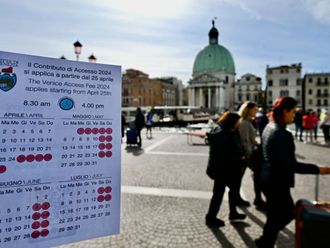Dubai: Intra-regional tourism in the Arab region is weak and faces numerous challenges related to accessibility, infrastructure and security, according to experts and industry leaders speaking at the Arabian Travel Market (ATM) yesterday.
While the tourism sectors across the Arabic countries is seen as having huge financial potential, visa issues and lack of proper hospitality facilities — adding to this the ongoing conflicts in the region — are the major issues depressing tourism.
Officials from the United Nation World Tourism Organisation (UNWTO) and Ministers from the Middle East and North Africa (Mena) attending ATM said they shared the belief there should be a unified commitment to move the industry forward.
“The next decades will be crucial for the Middle East region to consolidate its tourism recovery and growth in a sustainable manner,” said Taleb Rifai, Secretary General of WTO. “As tourism slowly rebounds in the region, we have before ourselves a unique opportunity to support intra-regional tourism through the advancement of critical areas that reinforce tourism growth, including visa facilitation, increased connectivity, and the promotion of international mega-events to the region.”
Europe and Asia Pacific “have been largely driven by its robust intra-regional tourism. In Europe, almost 85 per cent of its international arrivals are intra-regional tourists, while intra-regional travel in the Asia-Pacific region has been boosted by closer regional cooperation and improvements on visa policies,” Rifai said.
Security issues were also highlighted as a leading obstacle, according to Michel Pharaon, Lebanon’s Minister of Tourism, who said the whole region is going through a difficult time.
“We are labelled as an unsecured and instable region. We are missing a lot. However, the two mega projects, Expo 2020 in Dubai and the [World Cup] in 2022 in Qatar — it is a good opportunity not only for the GCC but for the whole region to change this negative perception.”
See also B5-7












